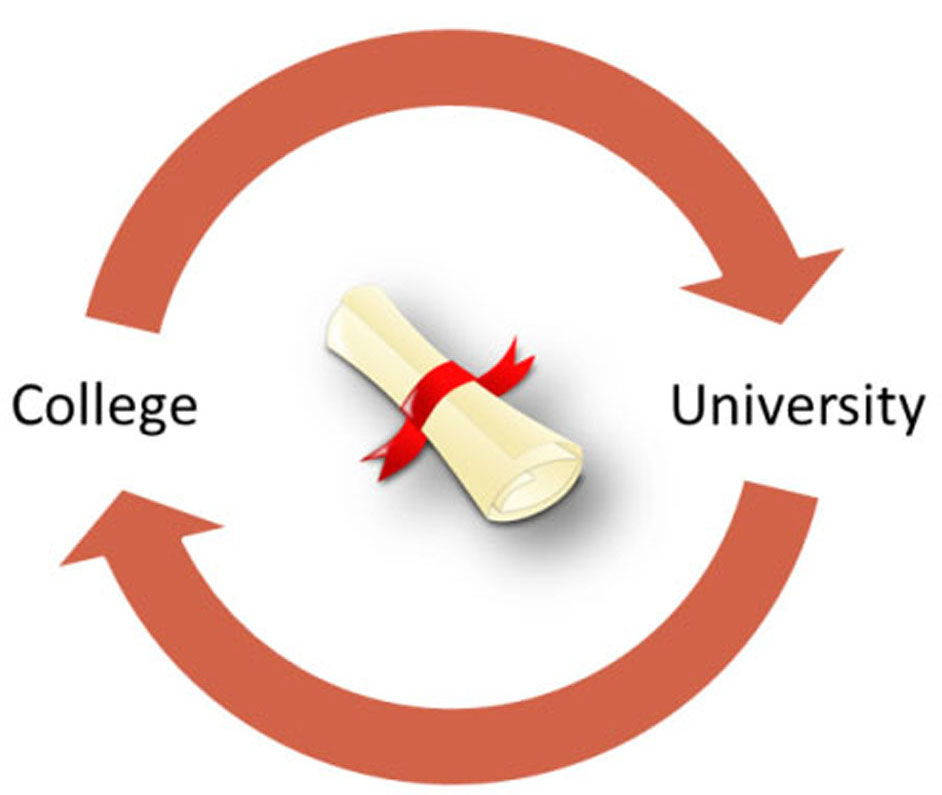By Troy Miller
Senior Researcher and Policy Analyst, Florida College Access Network
 Each year thousands of area community and state college students transfer to the University of South Florida, the majority doing so with their associate’s degree already completed. What happens though when these students transfer to USF before completing their associate’s degree?
Each year thousands of area community and state college students transfer to the University of South Florida, the majority doing so with their associate’s degree already completed. What happens though when these students transfer to USF before completing their associate’s degree?
Historically, the answer to that question would be “nothing.” Some transfer students make quick work of their bachelor’s degree while some require a few years to finish. Many students leave before finishing any degree all. These students often have years of college experience with dozens of credits to their name and nothing to show for it. Students, as well as their former colleges, tend to suffer from this trend. Added credentials can help students find a firmer place in the job market and 2-year colleges fail to get recognition for students who complete partial requirements toward an associate’s degree before transferring to a university.
The University of South Florida and area community colleges aim to reverse this trend, as a new agreement between these institutions puts forth a process for making sure eligible students get credit for completing an associate’s degree if they meet the requirements. The consortium of area institutions includes USF, Hillsborough Community College, Pasco-Hernando Community College, St. Petersburg College and Polk State College with others to be considered later. The initiative will look at students who earned at least 15 credits from their local college before transferring to USF without completing their associate’s degree. According to enrollment data, each year there are around 1,000 students who transfer from a Florida College System institution to USF without their associate’s degree. USF will then work together with the area colleges to establish whether students finished the coursework needed to complete an associate of arts degree using their combined academic coursework. If it is found that a transfer student who started coursework at an area college finished what was necessary to complete an associate’s degree while attending USF, the student will be notified and awarded a degree from their former state college. Along with USF and its area state colleges, three other public universities in Florida are also leading efforts to connect its eligible transfer student population with associate’s degrees.
This kind of collaboration is unique but reflective of how institutions are changing to keep up with how higher education has evolved. Students’ transferring from one institution to another is pretty typical these days, as it’s been shown that one-third of all college students change institutions at some point before earning a degree. These transfers more often than not take place during the second year or later of college, meaning students likely take with them more than a few credits. At the University of South Florida, over 82% of its transfer students from Florida public colleges did so with 15 or more credits earned.
This is a proactive step forward for higher education in Florida and falls in line with the public’s demand to see colleges and universities help students, especially adults, complete their degrees. These students will have a chance to bump up their pay, improve their employment outcomes and provide the local economy with a boost. Despite the challenges that exist in awarding these students degrees, including contacting and finding students, performing the degree audits, overcoming registration holds, outstanding balances and financial aid policies (getting a degree can impact a student’s financial aid eligibility), the number of students who will benefit makes this effort worthwhile. If this collaboration works, other institutions in Florida will likely follow suit. With today’s college students becoming increasingly mobile, it’s important that we design a higher education system that can keep up with them.
~Follow Troy Miller on Twitter @TroyMillerFCAN
